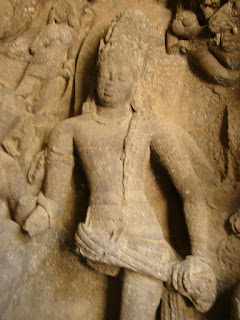What is Shavism? Who is Shiva?
 |
| Sissssou2, Shiva Bijapur (28 February 2010). Creative Commons. |
 |
| Shiva Lingam, 28 February 2010, Flickr |
Shiva is associated with death, fertility cults, worship of bulls and serpents, magical cures, funeral rites, warrior cults and battlefield rituals. Historically the worship of Shiva started with prehistoric religious beliefs and is said to precede the advent of the Vedic religion in northwestern India, more specifically in the mountainous regions.
Followers can worship Shiva everyday, but Monday is considered to be auspicious for him. To earn the grace of their Lord, some followers of Shiva choose to fast on Mondays. In fact, unmarried girls are encouraged to fast for Shiva on Mondays because this is perceived as a way to request Shiva for a virtuous husband.
Over time, more cultures started to recognize Shiva and proceeded to worship as well. There is portrayal of Shiva as Pashupati on the seals and icons of the Harappan civilization. In fact, Shiva lingas and snake worships can be found all over the world, that is speculated to have origins in Shaivism. Even in 9000 BC, in a place called Gobekli Tepe in Turkey, people worship Shiva. There is another example which can be found in Europe as well. Along with Europe, there seems to be documented worship of Shiva in the ancient Roman Empire.
Perhaps this could be evidence for the global spread of Shaivism, although its origin is from India.
Followers can worship Shiva everyday, but Monday is considered to be auspicious for him. To earn the grace of their Lord, some followers of Shiva choose to fast on Mondays. In fact, unmarried girls are encouraged to fast for Shiva on Mondays because this is perceived as a way to request Shiva for a virtuous husband.
Over time, more cultures started to recognize Shiva and proceeded to worship as well. There is portrayal of Shiva as Pashupati on the seals and icons of the Harappan civilization. In fact, Shiva lingas and snake worships can be found all over the world, that is speculated to have origins in Shaivism. Even in 9000 BC, in a place called Gobekli Tepe in Turkey, people worship Shiva. There is another example which can be found in Europe as well. Along with Europe, there seems to be documented worship of Shiva in the ancient Roman Empire.
Perhaps this could be evidence for the global spread of Shaivism, although its origin is from India.
 |
| Krishna Kumar, Thiruneelakudi - Shiva painting in the wall (17 December 2011). Creative Commons. |

Comments
Post a Comment